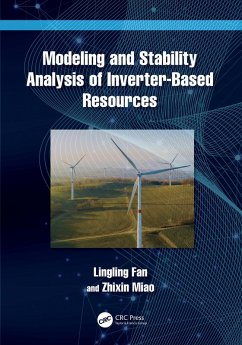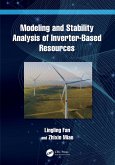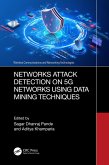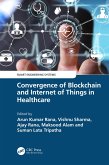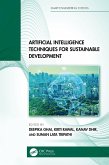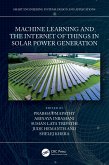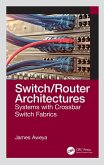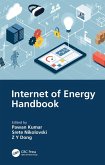178,95 €
178,95 €
inkl. MwSt.
Sofort per Download lieferbar

89 °P sammeln
178,95 €
Als Download kaufen

178,95 €
inkl. MwSt.
Sofort per Download lieferbar

89 °P sammeln
Jetzt verschenken
Alle Infos zum eBook verschenken
178,95 €
inkl. MwSt.
Sofort per Download lieferbar
Alle Infos zum eBook verschenken

89 °P sammeln
- Format: ePub
- Merkliste
- Auf die Merkliste
- Bewerten Bewerten
- Teilen
- Produkt teilen
- Produkterinnerung
- Produkterinnerung

Bitte loggen Sie sich zunächst in Ihr Kundenkonto ein oder registrieren Sie sich bei
bücher.de, um das eBook-Abo tolino select nutzen zu können.
Hier können Sie sich einloggen
Hier können Sie sich einloggen
Sie sind bereits eingeloggt. Klicken Sie auf 2. tolino select Abo, um fortzufahren.

Bitte loggen Sie sich zunächst in Ihr Kundenkonto ein oder registrieren Sie sich bei bücher.de, um das eBook-Abo tolino select nutzen zu können.
Renewable energy sources interface with the ac grids via inverters and are termed inverter-based resources (IBRs).
- Geräte: eReader
- mit Kopierschutz
- eBook Hilfe
Andere Kunden interessierten sich auch für
![Modeling and Stability Analysis of Inverter-Based Resources (eBook, PDF) Modeling and Stability Analysis of Inverter-Based Resources (eBook, PDF)]() Lingling FanModeling and Stability Analysis of Inverter-Based Resources (eBook, PDF)178,95 €
Lingling FanModeling and Stability Analysis of Inverter-Based Resources (eBook, PDF)178,95 €![Networks Attack Detection on 5G Networks using Data Mining Techniques (eBook, ePUB) Networks Attack Detection on 5G Networks using Data Mining Techniques (eBook, ePUB)]() Networks Attack Detection on 5G Networks using Data Mining Techniques (eBook, ePUB)52,95 €
Networks Attack Detection on 5G Networks using Data Mining Techniques (eBook, ePUB)52,95 €![Convergence of Blockchain and Internet of Things in Healthcare (eBook, ePUB) Convergence of Blockchain and Internet of Things in Healthcare (eBook, ePUB)]() Convergence of Blockchain and Internet of Things in Healthcare (eBook, ePUB)52,95 €
Convergence of Blockchain and Internet of Things in Healthcare (eBook, ePUB)52,95 €![Artificial Intelligence Techniques for Sustainable Development (eBook, ePUB) Artificial Intelligence Techniques for Sustainable Development (eBook, ePUB)]() Artificial Intelligence Techniques for Sustainable Development (eBook, ePUB)54,95 €
Artificial Intelligence Techniques for Sustainable Development (eBook, ePUB)54,95 €![Machine Learning and the Internet of Things in Solar Power Generation (eBook, ePUB) Machine Learning and the Internet of Things in Solar Power Generation (eBook, ePUB)]() Machine Learning and the Internet of Things in Solar Power Generation (eBook, ePUB)48,95 €
Machine Learning and the Internet of Things in Solar Power Generation (eBook, ePUB)48,95 €![Switch/Router Architectures (eBook, ePUB) Switch/Router Architectures (eBook, ePUB)]() James AweyaSwitch/Router Architectures (eBook, ePUB)52,95 €
James AweyaSwitch/Router Architectures (eBook, ePUB)52,95 €![Internet of Energy Handbook (eBook, ePUB) Internet of Energy Handbook (eBook, ePUB)]() Internet of Energy Handbook (eBook, ePUB)84,95 €
Internet of Energy Handbook (eBook, ePUB)84,95 €-
-
-
Renewable energy sources interface with the ac grids via inverters and are termed inverter-based resources (IBRs).
Dieser Download kann aus rechtlichen Gründen nur mit Rechnungsadresse in A, B, BG, CY, CZ, D, DK, EW, E, FIN, F, GR, HR, H, IRL, I, LT, L, LR, M, NL, PL, P, R, S, SLO, SK ausgeliefert werden.
Produktdetails
- Produktdetails
- Verlag: Taylor & Francis eBooks
- Seitenzahl: 286
- Erscheinungstermin: 29. November 2023
- Englisch
- ISBN-13: 9781000999624
- Artikelnr.: 69249857
- Verlag: Taylor & Francis eBooks
- Seitenzahl: 286
- Erscheinungstermin: 29. November 2023
- Englisch
- ISBN-13: 9781000999624
- Artikelnr.: 69249857
- Herstellerkennzeichnung Die Herstellerinformationen sind derzeit nicht verfügbar.
Lingling Fan is Professor at the Department of Electrical Engineering at the University of South Florida (USF). Before joining the academia, she has worked in the grid operating industry Mid-west ISO for six years (2001-2007). She received the Bachelor of Science and Master of Science degrees in Electrical Engineering from Southeast University (Nanjing, China) in 1994 and 1997, respectively. She obtained the Ph.D. degree in Electrical Engineering from West Virginia University, Morgantown in 2001. Dr. Fan is research active in control, computing, and dynamic analysis of power systems, power electronics and electric machines. Her research has been sponsored by the Department of Energy, Midwest ISO, Duke Energy, National Science Foundation, Electric Power Research Institute, Florida Cyber Security Center, Jabil, etc. She has authored/co-authored two books Modeling and Analysis of Double Fed Induction Generator Wind Energy Systems (Elsevier Press, 2015) and Control and Dynamics in Power Systems and Microgrids (CRC press, 2017). Dr. Fan has served as Consulting Editor for IEEE transactions on Sustainable Energy. Currently, she serves as the Editor-in-Chief of IEEE Electrification Magazine and Associate Editor for IEEE transactions on Energy Conversion. She Fan was elevated to IEEE Fellow class 2022 for her contributions to stability analysis and control of inverter-based resources. She is the recipient of USF's outstand- ing research achievement award in 2022 and has been featured in IEEE Power and Energy Society social media in March 2022 to celebrate World Engineering Day and National Women's History Month.
Zhixin Miao is Professor at the Department of Electrical Engineering at the University of South Florida (USF). He received the Bachelor of Science in Electrical Engineering degree from the Huazhong University of Science and Technology at Wuhan China in 1992, the Master of Science in Electrical Engineering degree from the Graduate School, Nanjing Automation Research Institute (NARI) at Nanjing China in 1997, and the Ph.D. degree in electrical engineering from West Virginia University at Morgantown in 2002. He worked as a power system protection engineer from1992-1999 in NARI and a transmission planning engineer at Midwest ISO, St. Paul, MN, from 2002 to 2009. His research interests include digital twins, power system computer and hardware simulations, microgrids, and renewable energy integration. Dr. Miao serves as an associate editor for IEEE transactions on Sustainable Energy.
Zhixin Miao is Professor at the Department of Electrical Engineering at the University of South Florida (USF). He received the Bachelor of Science in Electrical Engineering degree from the Huazhong University of Science and Technology at Wuhan China in 1992, the Master of Science in Electrical Engineering degree from the Graduate School, Nanjing Automation Research Institute (NARI) at Nanjing China in 1997, and the Ph.D. degree in electrical engineering from West Virginia University at Morgantown in 2002. He worked as a power system protection engineer from1992-1999 in NARI and a transmission planning engineer at Midwest ISO, St. Paul, MN, from 2002 to 2009. His research interests include digital twins, power system computer and hardware simulations, microgrids, and renewable energy integration. Dr. Miao serves as an associate editor for IEEE transactions on Sustainable Energy.
1. Introduction. 2. Tools. 3. Type-4 Wind Farms and Solar PVs: Modeling and Stability Analysis. 4. Type-3 Wind Farms: Modeling and Stability Analysis. 5. A Power Network with Multiple IBRs.
1. Introduction. 2. Tools. 3. Type-4 Wind Farms and Solar PVs: Modeling and Stability Analysis. 4. Type-3 Wind Farms: Modeling and Stability Analysis. 5. A Power Network with Multiple IBRs.
